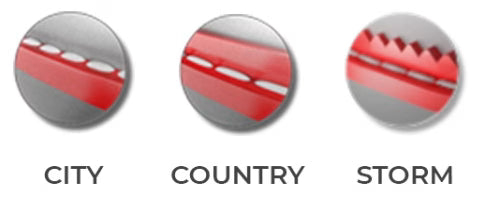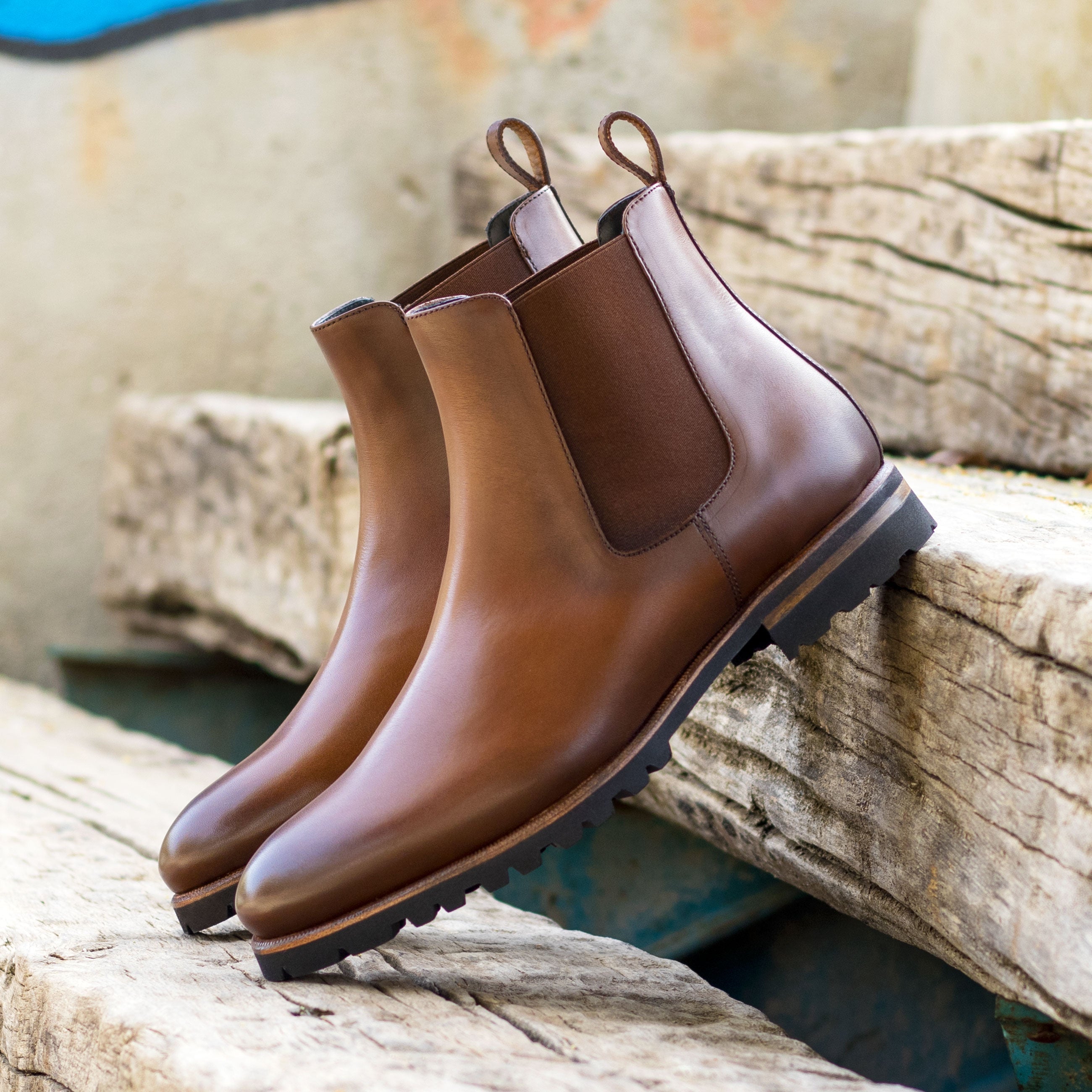Goodyear welt is the gold standard when it comes to shoe sole construction
All our made to order dress shoes, and boots are Goodyear welted and handmade in Spain for a heavy and more robust English style shoes.
In these Poyter Goodyear Welted Shoes, the welt is a strip of leather that runs along the perimeter of the outsole. Its primary function is to attach the upper to the outsole and create greater durability. In our “Design Your Own” category, you can choose from one of our 3 goodyear welt construction styles as shown below.

What is Goodyear Welt Sole Construction?
Goodyear welted shoes are famous for their waterproof soles because the stitch that attaches the sole to the shoe runs along the outside edge instead of piercing through to the inside of the shoe. The sole attaches to the welt (a strip of leather) which then attaches to the upper. The welt forms a cavity which is then filled with cork or similar material. Because the stitch line runs around the outside of the shoe it is relatively easy for a shoe-maker to resole Goodyear welted shoes. The name comes from Charles Goodyear who patented the machine capable of sewing around the perimeter, replacing the need for hand-sewn welts. These days, it is rare to see shoes with Goodyear welting because of the time and difficulty, and the fact that it requires skilled labour.

The Limitation of Traditional Shoe Construction
Before learning about Goodyear welting, it is crucial to understand how a typical shoe is made. The standard shoemaking way is known as cement construction. It takes the upper leather and glues it directly to the outsole. This method is simple and quick, fuelling the mass production of shoes around the world. But, these shoes wear down quick. Moreover, once the outsoles are worn down, it is extremely hard to resole them. Therefore, durability is non-existent with these shoes.
How the Goodyear Welted Shoes Addresses the Durability Dilemma?
Goodyear Welt addresses the resoleability conundrum masterfully by introducing the ‘welt’ in shoe construction. This groundbreaking addition takes the functionality and longevity of the shoe to the next level. The welt is a long strip of leather that lies between the outsole and the upper. The process of attaching the welt to the upper and then stitching the welt to the outsole makes a major difference. This process makes the shoe virtually water-resistant and easily resoleable.
How Is Goodyear Welt Construction Different?
There are three fundamental steps in Goodyear Welt construction:
- The shoemaker starts with the insole for stitching. A rib is created that runs across the insole. Next, they either cut and sculpt the insole or use another material like linen tape.
- The shoemaker then secures the outsole and insole.
- A shoe-specific thread is sewn across the insole rib, upper, and welt. Shoemakers use a secondary, different stitch to join the welt with the outsole. Adding a lockstitch for stitches ensures that the shoe isn’t affected by normal wear and tear.
What Makes Goodyear Welted Shoes Better?
The strong point of Goodyear welt construction is that it is water-resistant, as the insole is sealed off while other parts are connected to the welt. These shoes are made with a specific mindset – they are built to last longer than their counterparts.
Another distinct quality of Goodyear welt construction is that you can replace the sole as many times as you want – just go to any local cobbler and he will do the needful. With this functionality, the wearers can achieve the desirable patina effect that is built through years of wear.
If the upper’s condition in the shoe is maintained to a certain extent, you can wear these shoes for 20 years – a terrific value unseen among other shoes. This is certainly better than trying to buy countless ordinary and cheap shoes that don’t only wear down in a short period of time but also affect your appearance during personal and professional meet-ups.
Although it takes more time and money to make Goodyear welted shoes, they retain their popularity due to their substantial benefits that blow the competition out of the water.
Benefits of Goodyear Welt Construction:
Design – Distinguish Yourself
The stitching process in Goodyear is unique, distinguished by the upper curve going inwards towards the sole’s edge. This is what makes these shoes recognisable and can help you stand out in a packed room.
Solidity – Get Sturdiness
Poyter’s Goodyear stitching ensures optimal adherence of the upper, welt, sole, and insole, lending top-quality robustness to the shoe.
Durability – Wear for Years
The sewing method used in Goodyear Welt construction makes it sturdy, which is why these shoes last longer than normal shoes, without being affected by the normal wear and tear of the sole.
Convenience – Attain Comfort
The midsole filling the gap between the outsole and insole offers excellent support to the foot, ensuring that these shoes aren’t only classy, but keep you comfortable throughout the day – you will not feel the urge to take them out.
Invest In Comfort and Long-Term Reliability with Poyter’s Goodyear Welt Shoes
The Goodyear welt construction is the preferred shoemaking method for some of the leading names in the British shoe industry. Poyter is one of them. At Poyter, we offer a large collection of Goodyear-constructed models that come at an irresistible price/quality ratio and shine in terms of artisanship.
Getting the most out of British designs and Pakistani shoemaking craft, Poyter knows what needs to be done to help you wear a pair of shoes that can last for a long time to come.















